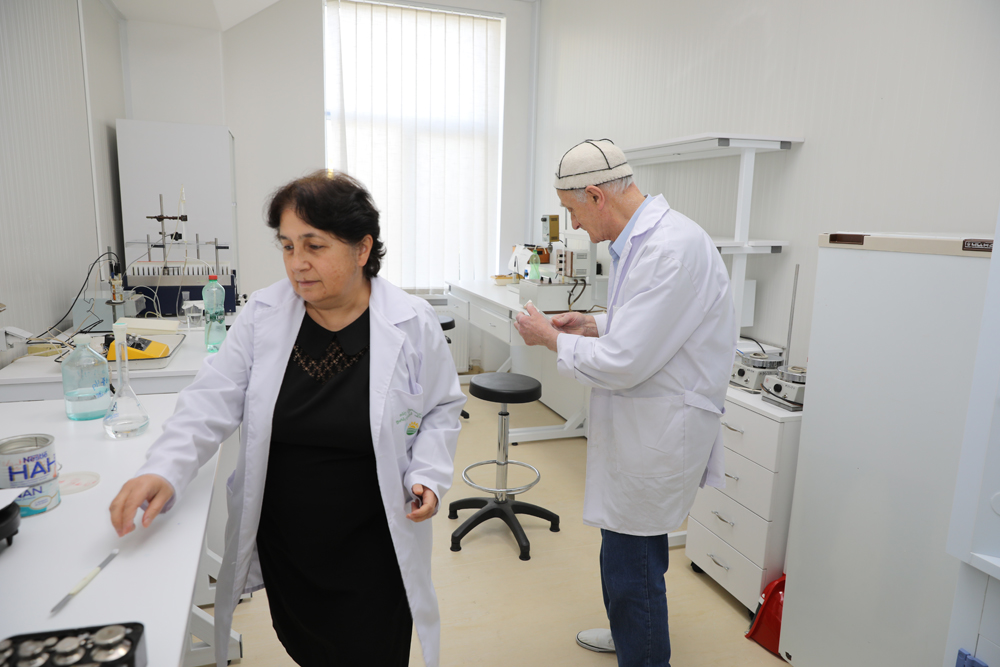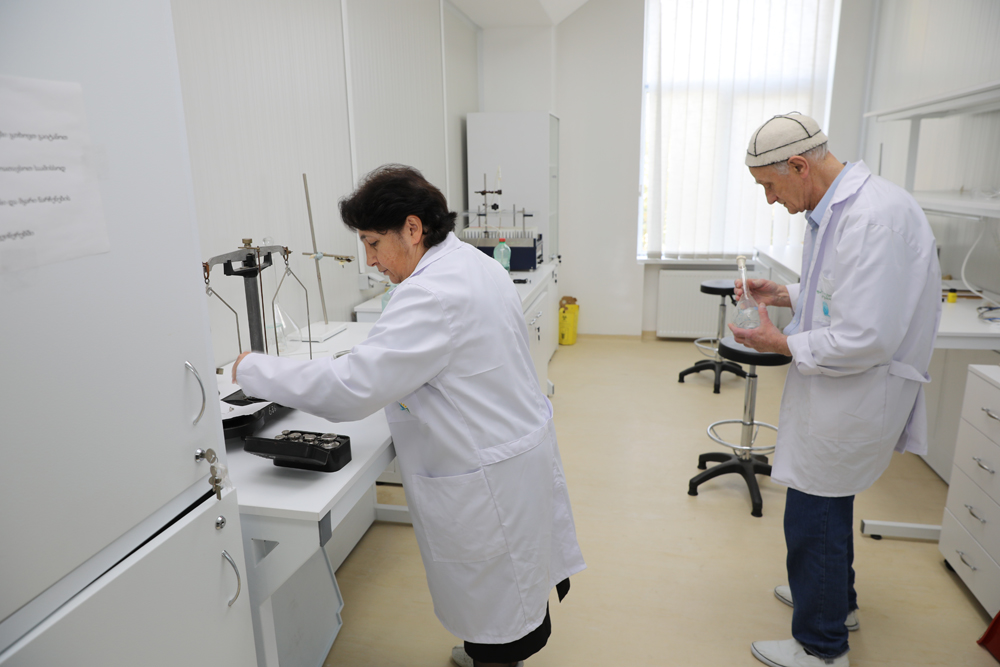Personnel: Principal scientific researcher L. Nadirashvili. Senior scientific researcher N. Chaganava
History: Prior to the creation of the lab there was a 3-member fermentology team, that had been studying Euphorbias growing in Georgia; Rimoprotelan, which is an elastase, produced by the oxytertacycline producing Actinomyces rimosus, in collaboration of the Institute of Organic Chemistry of the Academy of Sciences and the Protein Chemistry Laboratory, A method for obtaining this enzyme has been patented in several countries and G. Erkomaishvili is among the authors.
In 1978 With the initiative of G. Erkomaishvili and employee of the main Botanical Garden of the USSR Academy of Sciences V. Rosinsk and with the support of the main Botanical Garden, the USSR Committee on Science and Technic commissioned the Institute to study and produce medicinal papain. The institute received additional funding and 20 staff units for pharmaceutical fermentology and pharmacology laboratories and a manufacturing site. This assignment and the funds allocated at the same time meant the creation of a serious group of curative fermentology at our institution.
The goal and objectives of the study: The development of enzyme containing drugs for the treatment of bone-joint pathologies, arthritis and periarthritis, inflammatory processes, swelling, burn and purulent scars, and tumors.
Scientific directions: medicinal fermentology.
Research Methods: Chromatography, Gel-filtration, Centrifugation, Electrophoresis, Lyophilization, and other biochemical methods.
Academic direction: The Doctoral program "Development and standardization of therapeutic action gels for bone-joint pathologies, from enzyme-containing substances" has been presented and approved.
Expert-consulting direction: Review of scientific works and theses.
Research results: Caripasim an enzyme (papain) containing therapeutic drug was obtained - which is registered in Georgia, Russia and many CIS countries and is widely used to treat pulmonary abscess, vertebral, ophthalmic, neurological and other diseases through ionophoresis.
Besides Caripasim, several remedies are created from papain, including: Papazim injection (Papazim full documentation was sent to the Registered Pharmacy Committee), Caripan ointment, Papainan dry ointment, Gel Caripasim # 1 and rectal supposipories.
Chemical modification of papain was accomplished by conjugation with water-soluble, biocompatible and biodegradable polymers - oxidized dextran (aldehyde dextran) and synthetic biodegradable polymers of polyamide nature. Pharmacological study was performed of aldehyde-dextran-modified papain for the treatment of eyes hyphema (experiment in rabbits). This drug showed better results then native papain and streptodecase (dextran modified streptokinase). Pharmacological studies of polyamide-modified papain have shown that modified papain is 10 times less toxic than naturopathy.
Clinical trial of Papain-containing "gel Caripasim # 1" for electrophoresis was successfully performed.
Some physicochemical propertiesis of proteolytic enzyme bromelain of pineapple fruit and stem -, pH-optimum and temperature optimum of enzymatic activity;
The composition of bromelain-containing ointments and gels has been developed and their stability has been studied throughout the year.
Publications: About 90 publications have been published by laboratory staff over the last 10 years - 28 articles and theses.



